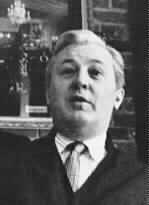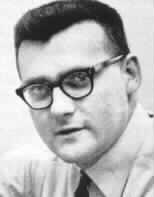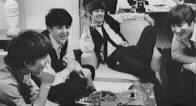Contents
Cover
In a photograph taken by his wife, Lee Harvey Oswald carries the rifle with which he shot President and the pistol with which he shot Officer Tippit.
Editorials
Better schools are the real goal of integration.
Don't sell the U.S. ski team short.
LIFE Guide
Where to see U.S. track stars
Well-planned Crawford
Movie star organizes everything for her tour. Special Report by Richard Oulahan
Was Jack Ruby Insane?
That is the question before the court as the killer of Lee Oswald goes to trial. By Ernest Havemann
The Beatle Invasion
They're here, and neither the U.S. nor its teen-agers will ever be quite the same
Items in the News
Terror in Cyprus
Murder and violence continue as the U.S. and Britain try for peace
Royal Love Affair
Princess Irene of the Netherlands is betrothed to Prince Carlos of Spain
A Missing Michelangelo?
Scholar says she has found a crucifix by the master -- but many experts disagree
Winter in Venice
Snow, mist and high tide bring a haunting beauty to the city. Photographed by Carlo Bavagnoli
Oswald: Evolution of an Assassin
A clinical study of the man who killed President Kennedy. By Donald Jackson
Whippet Wins at Westminster
Ch. Courtenay Fleetfoot of Pennyworth takes dogdom's highest prize
Too Much Leisure: Part II
Raised on a diet of hard work, Americans now face a glut of leisure. By Ernest Havemann
Bobby Fischer: Chess Master
A cocky boy wonder begins to grow up
Great Dinners II: Roast Beef
The most robust of all meats deserves precise cooking, finest wine and a menu in the grant style. Photographed by John Dominis
Miscellany
Wriggler under wraps

A portion of the cover of Life magazine for February 21st, 1964. |
One of the most interesting Christmas presents I got this year was an original, 1964 copy of Life magazine, with the famous Oswald picture on the front.
This picture of Oswald, shown holding the two weapons was reportedly found in the garage of Ruth Paine (where Marina and their two daughters lived). This photograph would become Warren Commission exhibit 133A.
Jack Ruby

The King of Torts: Jack Ruby's chief defense attorney, the colourful Melvin Belli |
There's not so much as a hint of suggestion in Life's story about Jack Ruby that Ruby might have known Oswald, or even that Ruby might have planned to kill him. Life's story, instead, focusses on whether or not Ruby can successfully plead not guilty by reason of insanity.
Bob Callahan would later write:
The essence of Belli's defense seemed to have been that, yes, his client was insane, but it was the city of Dallas itself which finally drove [Jack Ruby] over the edge. While this point of view might find champions across America, it was not a strategy which could be expected to find that much support among an all-white, entirely Protestant, hometown jury.
Lee Harvey Oswald
Life provides a fairly extensive history of Oswald. This article is described by Ray and Mary La Fontaine:

Oswald story reporter Donald Jackson
The centerpiece of the Oswald cover issue of February 21 was a long story by Donald Jackson titled "The Evolution of an Assassin." Jackson expanded on the quick study by Thompson, providing additional in-depth interviews and supporting details. His theme remained the same, however: Oswald, per the title still the unquestioned assassin, was damaged goods, a loner and misfit who even as a kid was largely remembered as a bit loopy and defective. The eccentricity only grew worse as he "evolved," Jackson reported.
[...]
Another man who examined the thirteen-year-old [Oswald] around this time, Youth House psychiatrist Renatus Hartogs (like Carro, a precursor of the storm of psycho-babblers to torment later decades), told the Life reporter that he was "not surprised" when Oswald was arrested for the assassination of the president, for "psychologically, he had all the qualifications of being a potential assassin." [...] As Sylvia Meagher would point out in 1967, however, this is not what Hartogs wrote in his report exactly eleven years earlier, on April 16, 1953. Young Oswald exhibited "no indication of psychotic changes; superior mental endowment; no retardation despite truancy; no psychotic mental changes," the psychiatrist had written then. He described Oswald as a "disturbed youngster who suffers under the impact of really existing emotional isolation and deprivation."
The Beatles
It's interesting to read the Letters to the Editor in which reasonable people whine about the Beatles. Here's an example:

The Beatles
Sirs:
While driving home on the freeway today, I turned on the car radio and heard the Beatles. Tomorrow, I intend to have the radio removed from the car!
- Dennis R. Hendley